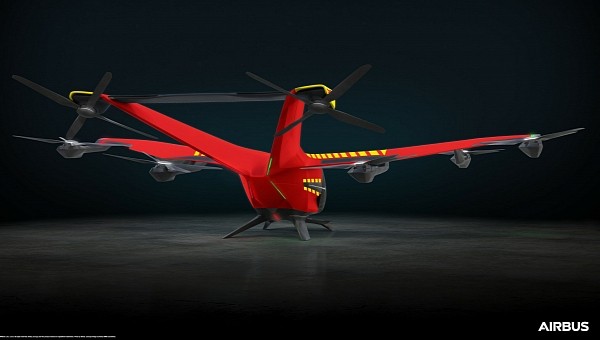Everyone is talking about cool air taxis and rugged military unmanned aircraft, but eVTOLs (electric vertical take-off and landing) could primarily act as efficient mobility alternatives in the medical field – a far more important role that saves lives.
These zero-emission aircraft that combine the benefits of helicopters and airplanes aren’t about to replace conventional helicopters at once. At least, not when it comes to EMS (Emergency Medical Services). According to Norwegian Air Ambulance, the country’s main HEMS operator, eVTOLs can be seen as an additional asset that will work alongside conventional choppers.
At least in the near future, standard rotorcraft will continue to be the preferred means of transportation in the medical emergency field, even when electric air taxis could be already conducting regular flights.
However, eVTOLs can make a difference when it comes to speed and access. Drones are already being used in some parts of the world to transport organs fast and efficiently. Larger and more sophisticated versions could expand that to passenger flights – they’d be safe enough to take medical specialists to where they’re needed- for example, an accident site that would normally be hard to reach by helicopter.
There’s no official date, but it looks like the Norwegian Air Ambulance will soon start operating eVTOLs as part of its fleet. Interestingly enough, this will continue to be an all-Airbus fleet. One of the top rotorcraft manufacturers in the world, Airbus has provided H135 and H145 helicopters to this operator, and will now do the same with its eVTOL model, the CityAirbus NextGen.
But the aircraft itself is just one piece of the puzzle. Together, Airbus and its partner, the Norwegian Air Ambulance Foundation, will need to establish all the details of these complex operations involving a new type of air vehicle. Infrastructure plays a major role in this (although EMS would not require dedicated vertiports, compared to air taxi services, which is an advantage) as well as air traffic management.
This strategy is still at the beginning, but will eventually expand internationally, with the hope of creating a regional network.
The CityAirbus NextGen was officially unveiled in 2021, as an electric four-seater with fixed wings and a V-shaped tail, fitted with eight propellers. Last year, the California-based MAGicALL was selected to supply the motor for the Airbus eVTOL, a lightweight, highly-integrated motor called MAGiDRIVE.
Airbus is even building a dedicated center for its eVTOL, in Donauworth, Germany. This is where all of the components and systems will undergo advanced testing, including the rotors and flight controls. Although the CityAirbus is the star of the show, the future center will also be used for the development of other electric propulsion systems.
The center is expected to be completed this year, when the CityAirbus will also conduct its first flight tests, in Germany.
At least in the near future, standard rotorcraft will continue to be the preferred means of transportation in the medical emergency field, even when electric air taxis could be already conducting regular flights.
However, eVTOLs can make a difference when it comes to speed and access. Drones are already being used in some parts of the world to transport organs fast and efficiently. Larger and more sophisticated versions could expand that to passenger flights – they’d be safe enough to take medical specialists to where they’re needed- for example, an accident site that would normally be hard to reach by helicopter.
There’s no official date, but it looks like the Norwegian Air Ambulance will soon start operating eVTOLs as part of its fleet. Interestingly enough, this will continue to be an all-Airbus fleet. One of the top rotorcraft manufacturers in the world, Airbus has provided H135 and H145 helicopters to this operator, and will now do the same with its eVTOL model, the CityAirbus NextGen.
But the aircraft itself is just one piece of the puzzle. Together, Airbus and its partner, the Norwegian Air Ambulance Foundation, will need to establish all the details of these complex operations involving a new type of air vehicle. Infrastructure plays a major role in this (although EMS would not require dedicated vertiports, compared to air taxi services, which is an advantage) as well as air traffic management.
This strategy is still at the beginning, but will eventually expand internationally, with the hope of creating a regional network.
The CityAirbus NextGen was officially unveiled in 2021, as an electric four-seater with fixed wings and a V-shaped tail, fitted with eight propellers. Last year, the California-based MAGicALL was selected to supply the motor for the Airbus eVTOL, a lightweight, highly-integrated motor called MAGiDRIVE.
Airbus is even building a dedicated center for its eVTOL, in Donauworth, Germany. This is where all of the components and systems will undergo advanced testing, including the rotors and flight controls. Although the CityAirbus is the star of the show, the future center will also be used for the development of other electric propulsion systems.
The center is expected to be completed this year, when the CityAirbus will also conduct its first flight tests, in Germany.








